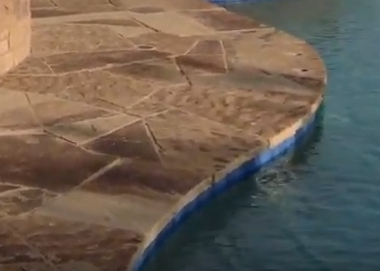Landscape, Plants, Hardscape & Decks
Of all the videos in this series, this is one in which I covered almost all of what I had to say about flagstone decking while on camera - a fact that doesn't leave me as much as usual to write about in this introduction. But as always, I've spotted a few areas worth additional comment. One small point needs more emphasis than I gave it, for example, and that has to do with
'Early in the history of garden design - dating back to the earliest days of civilization in Sumeria, Egypt and China - plants took center stage in garden spaces.' With that observation, Bruce Zaretsky opened his On the Level column in February 2009, then added: 'Terraces and hanging gardens were built not for their innate ornamental qualities, but rather to display the plants they contained. Always, the prized plant was
'If I were to ask the average watershaper to name the most versatile element in any landscape,' began Stephanie Rose in her January 2004 "Natural Companions" column, 'he or she would probably reply by talking about water or plants or some other equally prominent component. If you asked me the same question, however, I'd almost always say
'Growing as a designer,' wrote Brian Van Bower to start his Aqua Culture column in October 2008, 'is often a matter of seeing things from fresh perspectives. 'As one with roots in the pool industry, for example, I once thought first about water and about plants and softscape later (if at all). That bias isn't uncommon, of course: I know plenty of landscape architects and designers who think about plants first and only later
'Growing as a designer,' wrote Brian Van Bower to start his Aqua Culture column in October 2008, 'is often a matter of seeing things from fresh perspectives. 'As one with roots in the pool industry, for example, I once thought first about water and about plants and softscape later (if at all). That bias isn't uncommon, of course: I know plenty of landscape architects and designers who think about plants first and only later
‘Stairs, to borrow an immortal phrase from Rodney Dangerfield, “get no respect.” ’ That’s how Bruce Zaretsky opened his August 2008 column in WaterShapes, then continued: ‘[I]f my observations through the years tell me anything, the stairs set in far too many landscapes are strictly utilitarian objects – no more than a means of getting from one level of a space to another. The only thought that seems to go into some of them has to do with avoiding trip hazards, which is important but hardly the most
‘Whenever I receive a call for an initial meeting about a potential project,’ began Stephanie Rose in her Natural Companions column of May 2003, ‘I always envision – before the client ever opens his or her mouth – that I will be adorning a multi-acre estate with a classic garden that will someday be written about in books and examined by















